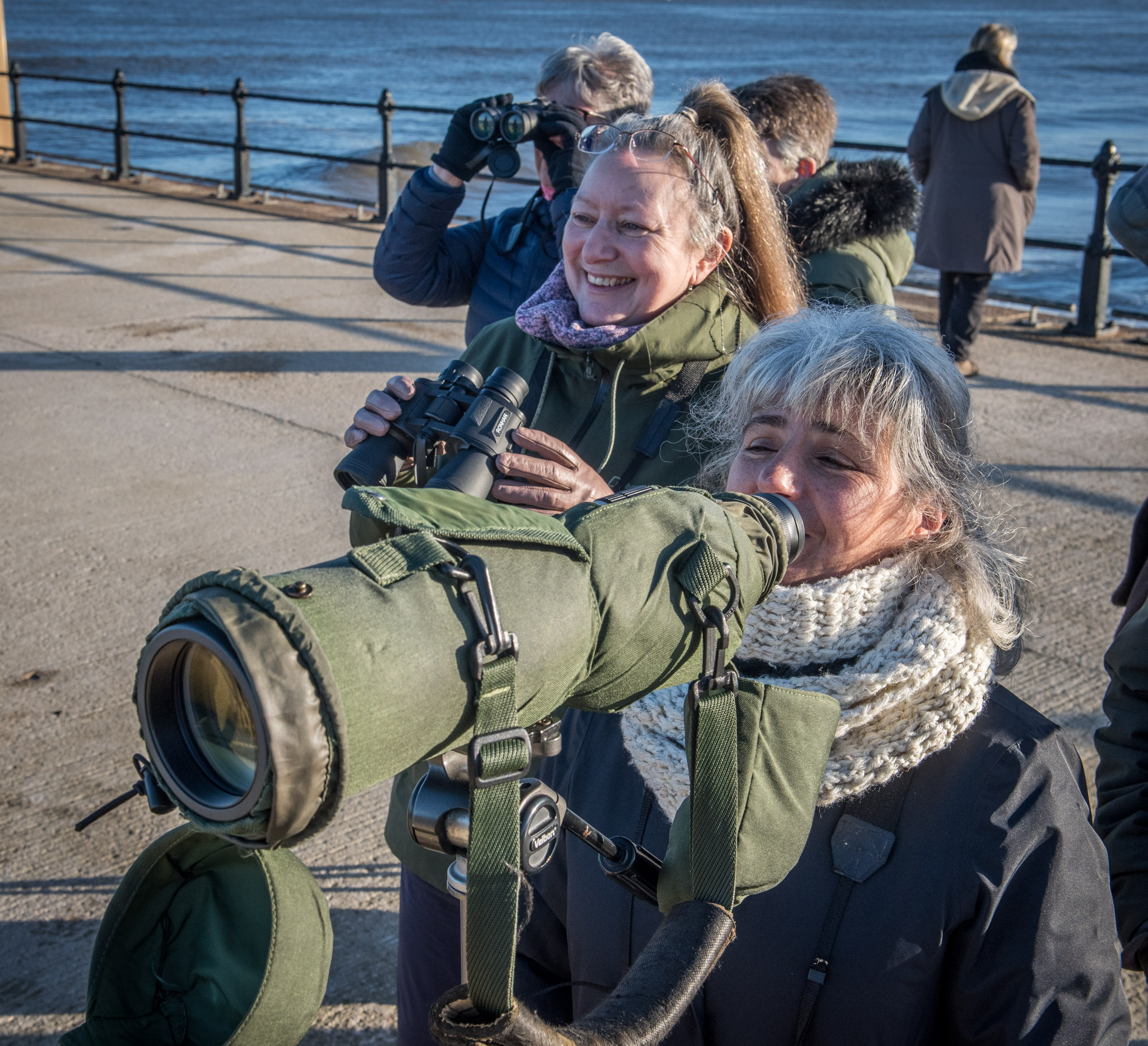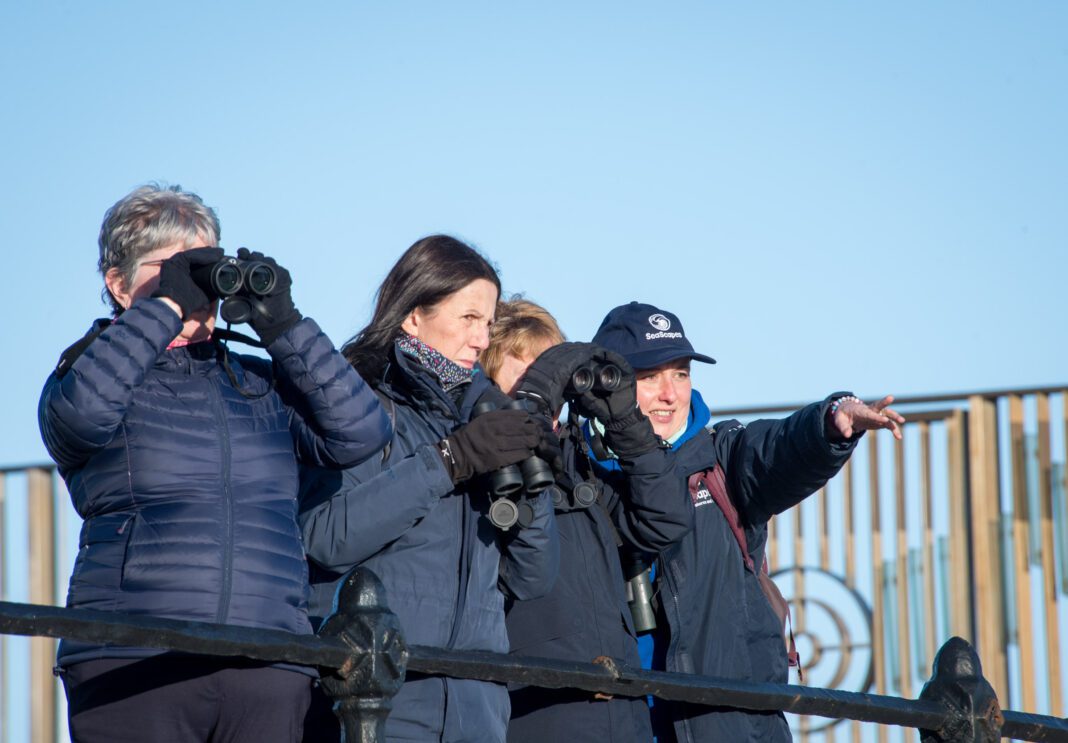As the holiday season approaches, families in the North East are starting to make their plans for Christmas. Even though the cold, damp and dark days of winter are here, there are still plenty of animals that can be spotted along the coast to liven up a winter walk.
So here, the SeaScapes Partnership have pulled together a guide of the winter winners to tick off your checklist as you gallivant along the finest coastal stretches in the North.
The Tyne to Tees coastline is internationally important for shorebirds, and you’ll see our feathered friends digging in the sand, rummaging under seaweed on rocks or even searching among the pebbles! Birdwatching brings year-round rewards, so grab your binoculars and keep your eyes (and ears) open – you’ll be in for a special treat!

Purple Sandpiper
Mainly a winter visitor to UK shores, the purple sandpiper is generally found in Orkney, Shetland, as well as the east coast of Scotland. Sometimes venturing down into the North East it is rare to find these birds south of Yorkshire. There are believed to be only 1-3 breeding pairs nesting in the UK.
Feeding on winkles, insects, spiders and crustaceans, the purple sandpiper is distinguishable with its mostly grey but somewhat pinkish-purple hue and white features, with orange legs and a black/orange beak.
Redshank
The redshank is one of the more distinctive birds in the sandpiper family with its bright orange-red legs and medium-length bill. With a brown-speckled back, the redshank probes deep into our shorelines to search for insects, earthworms, molluscs and crustaceans.
You have a great chance to see these birds in the coming weeks, with 25,000 pairs breeding all-year round in the UK, and an additional 130,000 extra birds migrating to the UK during the winter season.
Dunlin
As the most common small wader, the dunlin is on the UK Birds of Conservation Concern Red List, which lists birds in the UK, Channel Islands and Isle of Man which are in most urgent need of our help. Although there are just 9,600 breeding pairs in the UK annually, in winter you will find up to 350,000 dunlins on our shores.
Dunlins have a pale breast/belly in winter and are pretty drab in appearance compared to their summer plumage. Feeding in flocks, they are usually found in nearby fields, saltmarshes and along the shore when the tide is high, seeking out insects, snails and worms.
Turnstone
Smaller in appearance than a redshank, the turnstone will look different in winter than when you might have spotted them this summer. A darker – black, brown, grey – upperpart and white underpart with orange legs is most likely to be found creeping over rocks on the hunt for insects, crustaceans and molluscs.
With more than 40,000 turnstones wintering in the UK, they are most commonly found on rocky and sandy shores, with seawalls and jetties particular hotspots for these terrific tourists.
When and where are the best time to see these winter winners?
The good news is that these birds can be found across our region, from Marsden Bay and Whitburn Bents, down to Parson’s Rocks at Roker, Red Acre Beach in Seaham through to Blackhall Rocks and Hartlepool Headland. Owing to their craving to feed on tasty marine worms, crabs and sea snails, this collection of birds feed best when the tide is out and the shore is exposed. It’s therefore best to spot shore birds around two hours before high tide, when the water is coming inland and pushing the birds up the beach towards you.
Remember though to watch from a distance to avoid disrupting their feeding habits and always keep dogs on leads when there are birds or other wildlife around.
The SeaScapes project is led by Durham County Council and consists of a consortium of partners united in their collective mission to influence support and increase protection of our sea and coastline.
To find out more about SeaScapes, visit www.exploreseascapes.co.uk

























